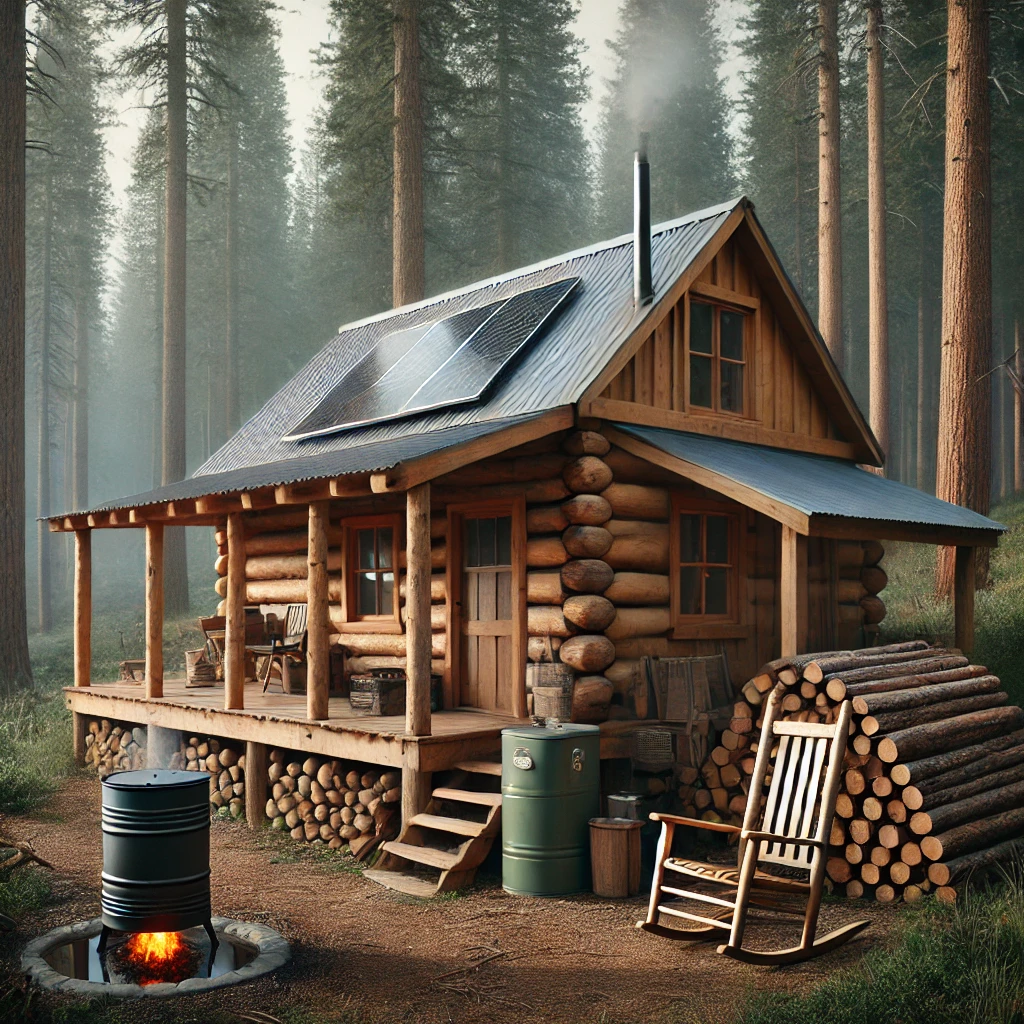How to Build a Simple Off-Grid Cabin
Building an off-grid cabin is a great way to achieve self-sufficiency and live a sustainable lifestyle. Whether you’re looking for a weekend retreat or a permanent residence, constructing a simple off-grid cabin requires careful planning and resource management. Here’s how to build your own off-grid cabin step by step.
1. Choose the Right Location
The first step in building an off-grid cabin is selecting the right location. Consider the following when choosing your site:
- Accessibility: Ensure the location is accessible by foot or vehicle, especially if you need to transport materials.
- Water Source: Having access to a water source like a well, stream, or rainwater collection is essential.
- Sunlight Exposure: If you plan on using solar power, make sure the site has good sunlight exposure.
- Climate Considerations: Choose a location that can withstand the local weather conditions, including snow, wind, or heavy rain.
2. Plan Your Cabin Design
Before construction, design your cabin based on your needs and available materials. Decide on the following:
- Size: Keep your cabin compact if you want to minimize construction costs and energy use.
- Foundation Type: Choose between a concrete slab, pier foundation, or wood platform depending on the land conditions.
- Number of Rooms: Plan for essential areas like a sleeping space, kitchen, and living area.
- Building Materials: Use locally sourced or reclaimed materials when possible to keep costs down.
3. Gather Your Building Materials
Choosing the right materials will ensure your cabin is durable and energy-efficient. Here are some common materials used in off-grid cabin construction:
- Wood: Logs, timber, or reclaimed wood are great for a rustic and natural look.
- Stone: Used for foundations and fireplaces, stone adds durability and insulation.
- Metal Roofing: Provides longevity and resistance to weather conditions.
- Insulation: Natural materials like straw bales, wool, or rigid foam can help regulate temperature.
4. Construct the Foundation
The foundation is critical for stability and longevity. Common foundation types include:
- Concrete Slab: A solid, durable option that works well for permanent cabins.
- Pier and Beam: Ideal for uneven terrain, this raises the cabin off the ground.
- Wood Platform: A quicker, cheaper option for small cabins in dry climates.
5. Frame the Cabin Structure
Once the foundation is set, frame the walls and roof. Here’s how:
- Use sturdy lumber to create a frame for the walls, ensuring they are plumb and level.
- Install roof trusses or rafters, depending on your chosen roof design.
- Secure all framing components with nails or screws to ensure stability.
6. Install Roofing and Siding
After the frame is complete, install the roof and siding to protect the cabin from the elements:
- Roofing: Metal roofing is durable and resistant to extreme weather.
- Siding: Use wood, stone, or other weather-resistant materials for insulation and protection.
- Seal Gaps: Prevent drafts and water leaks by sealing any gaps in the walls and roof.
7. Install Windows and Doors
Properly installing windows and doors will help with insulation and security:
- Use double-pane windows to improve insulation and energy efficiency.
- Ensure doors are sturdy and weatherproof.
- Install window and door seals to prevent air leaks.
8. Set Up Off-Grid Utilities
Since your cabin is off-grid, you’ll need alternative utilities:
- Solar Power: Install solar panels for electricity or use a generator as a backup.
- Water Supply: Use rainwater collection, a well, or a nearby stream with a filtration system.
- Heating: A wood stove or propane heater can provide warmth in colder months.
- Composting Toilet: A sustainable option for managing waste without plumbing.
9. Furnish and Insulate the Interior
To make your cabin comfortable and livable:
- Use natural insulation like wool, straw, or recycled materials.
- Install wood paneling for a rustic, cozy atmosphere.
- Choose space-saving furniture like foldable tables and multipurpose storage.
10. Final Touches and Maintenance
Once your cabin is complete, take care of the final details:
- Seal the cabin to protect against moisture and pests.
- Set up outdoor spaces like a porch or firepit for added functionality.
- Perform regular maintenance to ensure the cabin remains in good condition.
Final Tips
Building an off-grid cabin takes planning, effort, and time, but it can be an incredibly rewarding experience. By choosing the right location, materials, and utilities, you can create a self-sufficient home that offers comfort and independence. Start with a simple design and expand as needed, and soon you’ll have a cabin that supports your off-grid lifestyle.
